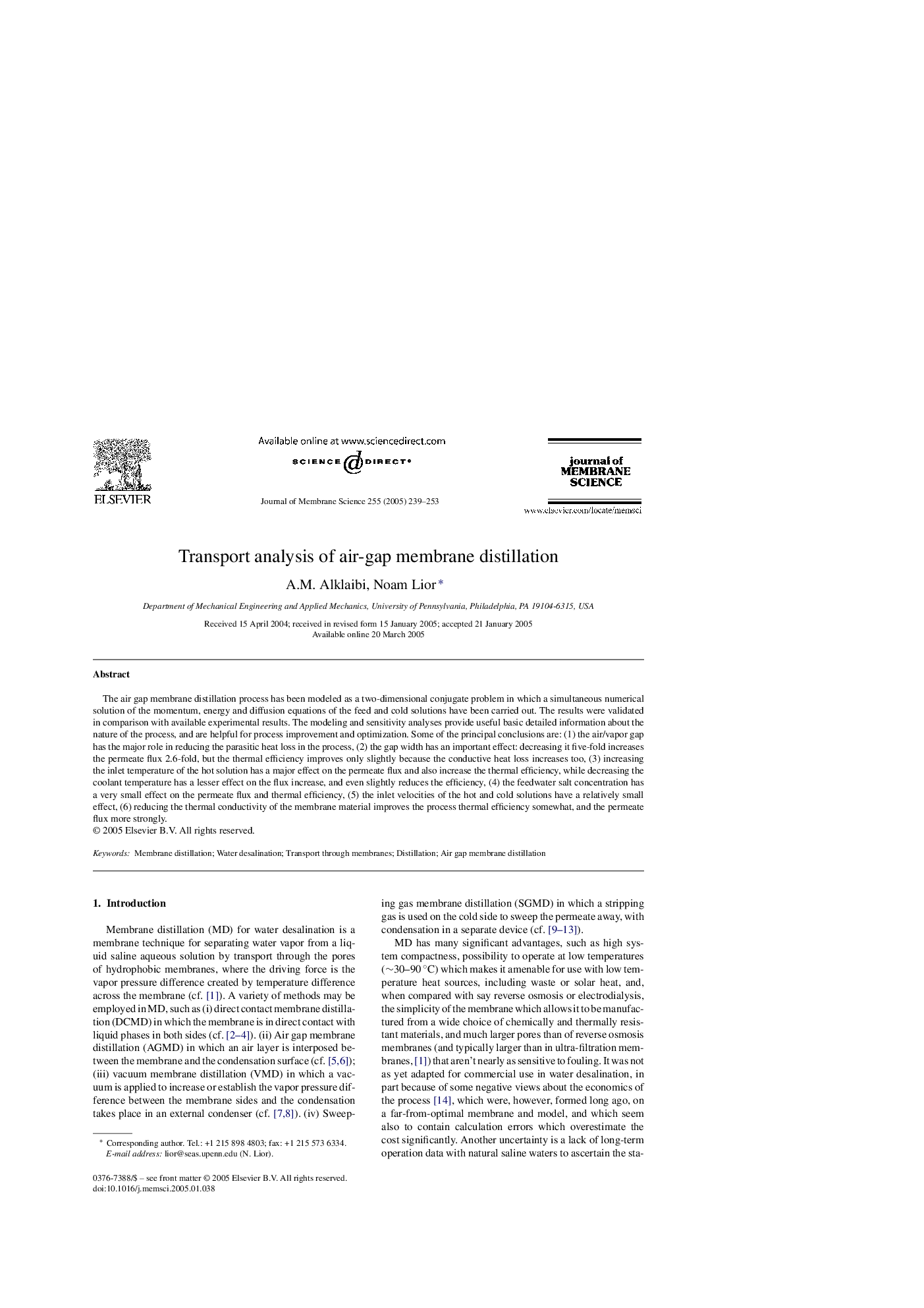| Article ID | Journal | Published Year | Pages | File Type |
|---|---|---|---|---|
| 9684851 | Journal of Membrane Science | 2005 | 15 Pages |
Abstract
The air gap membrane distillation process has been modeled as a two-dimensional conjugate problem in which a simultaneous numerical solution of the momentum, energy and diffusion equations of the feed and cold solutions have been carried out. The results were validated in comparison with available experimental results. The modeling and sensitivity analyses provide useful basic detailed information about the nature of the process, and are helpful for process improvement and optimization. Some of the principal conclusions are: (1) the air/vapor gap has the major role in reducing the parasitic heat loss in the process, (2) the gap width has an important effect: decreasing it five-fold increases the permeate flux 2.6-fold, but the thermal efficiency improves only slightly because the conductive heat loss increases too, (3) increasing the inlet temperature of the hot solution has a major effect on the permeate flux and also increase the thermal efficiency, while decreasing the coolant temperature has a lesser effect on the flux increase, and even slightly reduces the efficiency, (4) the feedwater salt concentration has a very small effect on the permeate flux and thermal efficiency, (5) the inlet velocities of the hot and cold solutions have a relatively small effect, (6) reducing the thermal conductivity of the membrane material improves the process thermal efficiency somewhat, and the permeate flux more strongly.
Related Topics
Physical Sciences and Engineering
Chemical Engineering
Filtration and Separation
Authors
A.M. Alklaibi, Noam Lior,
